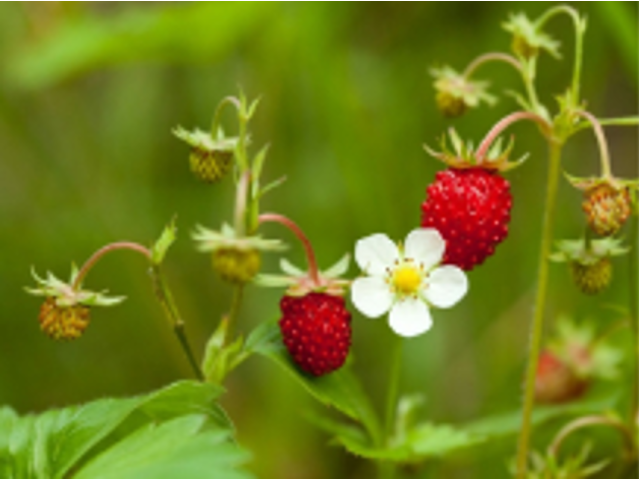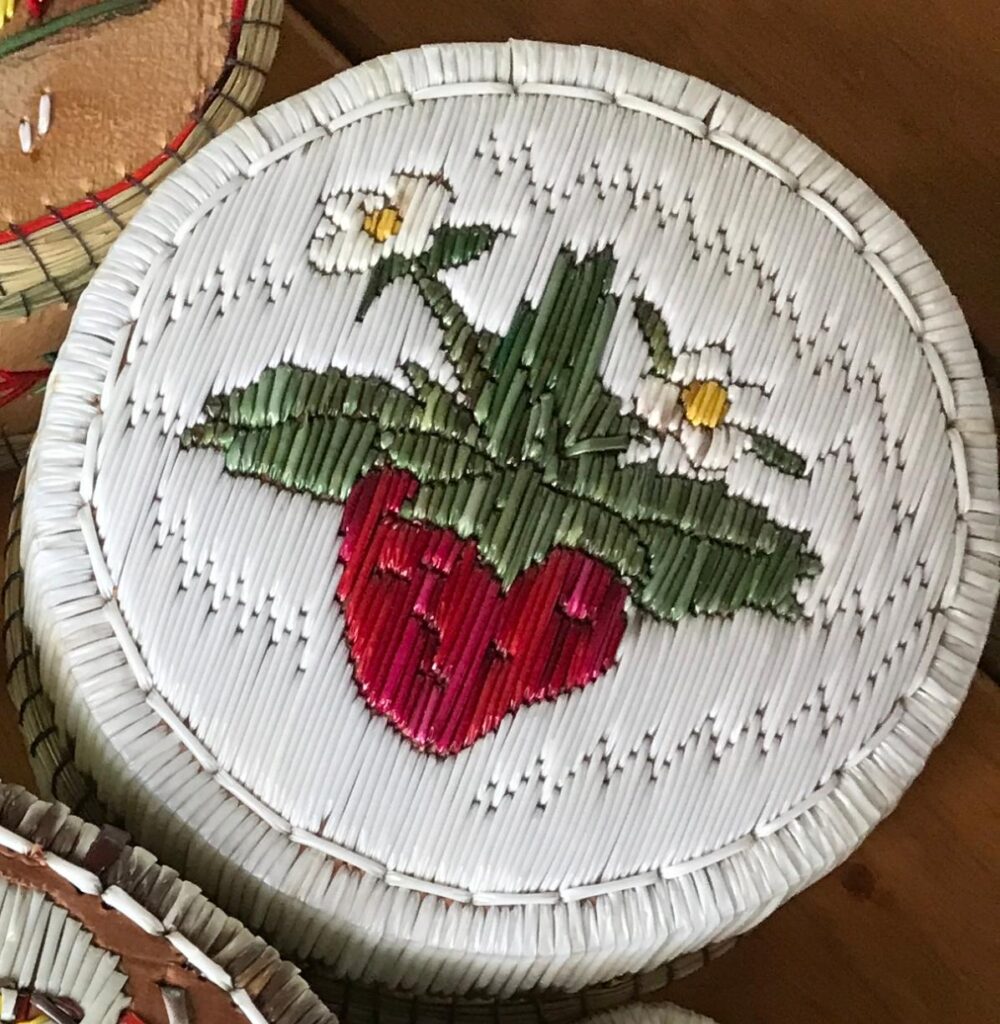Ode’min: The Heart Berry
Early summer days mean the ripening of wild strawberries, even amongst the rocks of Georgian Bay. These tough little berries are the first fruit of the year, and the whole plant, from roots to leaves, is a tiny powerhouse of beneficial vitamins and minerals. As such, wild strawberries have been held in sacred regard by the Ojibway people of the area. And as is often the case, the form and growth of the plant is beautifully reflected in Ojibway stories and teachings.
In the Ojibway language, strawberries are known as “ode’min” (pronounced o-day-i-min), “ode” meaning heart, and “min” being the word for berry. Shaped like a heart, and with seeds on the outside, the plant spreads via a system of above-ground stolons. New plants emerge and set down their own roots along these “runners”, creating an interconnected web of individuals.
To the Ojibway people, just as the human heart is connected to all the organs and systems of our body, the heart berries and their runners guide understanding of the interconnectedness of the health, both physical and spiritual, of our bodily systems.
Another teaching reflected in the entwined web of ode’min is the importance of the health of family and community ties. The seeds on the outside of the berry symbolize the vulnerability, humility, and forgiveness important to maintaining healthy personal and community connections. During the strawberry harvest in June, many Indigenous communities hold annual feasts, welcoming everyone home and letting go of differences.
The importance of strawberries to the Ojibway is literally woven through their culture in depictions of the plant in traditional quill art, beading, and painting.
As our summer community arrives and sets down our temporary roots, it is a delight to think of the teachings that the Ojibway people observe from the hardy little wild strawberry and to appreciate how nourishing our connections with each other and with our beautiful natural environment can be.

